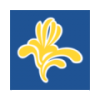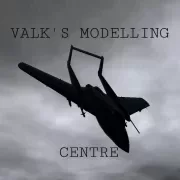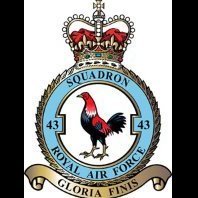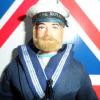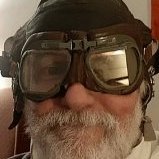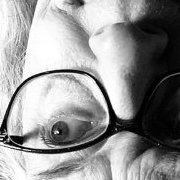Search the Community
Showing results for tags 'RAF'.
-
Hello everyone, it's time for me to join another group build! I'll be building a Revell 1:48 scale P-51C Mustang Mk.III, FB145 PK*F, straight from the box for this GB. According to Revell, this plane was in the No. 315 Squadron based in Coolham, England in June 1944. Box shot below: The kit contains six sprues of parts, detailing seems nice: Only problem is the weather which is unusually nice for a Finnish summer weather and thus limits my time at the bench, but I suspect this problem will be dealt with shortly /Jari
- 10 replies
-
- 5
-

-

-
LukGraph resin is to release a 1/32nd Royal Aircraft Factory B.E.2c resin kit - ref. 32-038 Source: https://www.facebook.com/LukGraph/posts/4654986227918038 V.P.
-
Inspired by an A-4F Skyhawk 'What If' profile by Damian, I thought to myself, why don't I try something similar but base my profile on a scheme that could be easily modeled with easy to get hold of decals too! So what I've come up with is an A-4F Skyhawk in RAF colours of Dark Green and Dark Sea Grey in a wrap around pattern using markings from a Lightning F.6 of 74 Squadron based in RAF Tengah in Singapore in 1970. We all know the scheme of a silver Lightning with a black fin. I'm not going to bother with a backstory for it. It is, as they say, what it is! Cheers Richard.
- 54 replies
-
- 15
-

-
RAF PBM Martin Mariner, USN says 42 acceptances for Britain. All off contract Nos 76927 with the note the Lend Lease contract dated 11 July 1942 scheduled 100 PBM-3C for Britain. 6 PBM-3C in May and 6 in June 1943, JX100 to 111 from BuNos 6505 to 6754, 1 PBM-3S in July, 5 in August JX112 to 117 from BuNos 6693 and 01674 to 01728, 3 PBM-3S in September and 13 in October 1943 JX118 to 133 from BuNos 48125 to 48163, 8 PBM-3D in November 1943 JX134 to 141 from BuNos 48124 and 48164 to 48223. The final 8 listed as having Wright R-2600-12 like the earlier Mariner, a note says change over from PBM-3S with R-2600-22 engine with 48124 modified for experimental purposes and assigned as first PBM-3D (Though 6655 is listed as a PBM-3D accepted in March 1943) The RAF have taken on charge dates for JX100 to 119, 121 to 123, 127, 129, 131, 132, total 28, JX100 and 101 in May 1943, JX103 in August, JX105 in September, the rest October to December 1943 Air Arsenal North America says JX100 = 6667, JX101-05 = 6686-90, Jx106-11 = 6738-43, JX112-17 = 01690-95, JX118 = 48143, JX119-21 = 48145-47, JX122-33 = 48152-63, JX134-41 = 48185-92. Also that JX101 was lost at Bermuda en route to Britain. The trans Atlantic flights file on the Air Britain site lists JX100 to 119, 121 to 123, 125, 127, 129, 131, 132, total 28. The following do not have a return flight, JX101, JX103, JX111, JX117, JX118, the RAF says JX103 sold SOC 6 Aug 1947, JX111 Cat E 8 Dec 1944, JX117 SOC 14 Nov 1944, JX118 SOC 11 Jan 1945. 524 Squadron records Mariner on strength during its first formation 20 October to 7 December 1943, based at Oban, it was supposed to have 12 Mariners at full strength, was allotted 6 but reports only receiving JX100, 105, 106, 111. The squadron is reported using the code 7R, unknown whether that was for both or just the second formation, April 1944 to May 1945 flying Wellington XIII then XIV. Trans Atlantic list in date order. Date / serial / route 19-Jul-43 / JX101 / Bermuda-UK. Sank taxying for take-off 18-Aug-43 / JX103 / Gander Lake-Largs 30-Sep-43 / JX105 / Gander Lake-Invergordon-Largs(Oct 6) 3-Oct-43 / JX106 / USA-Largs. 6-Oct-43 / JX105 / Invergordon-Largs. 7-Oct-43 / JX100 / Gander Lake-Largs 13-Oct-43 / JX107 / Gander Lake-Largs 13-Oct-43 / JX112 / Gander Lake-Largs 15-Oct-43 / JX113 / Gander Lake-Largs 28-Oct-43 / JX110 / USA-RK-Largs. 29-Oct-43 / JX116 / Gander-Largs. 29-Oct-43 / JX117 / Gander-Largs. 5-Nov-43 / JX108 / Gander Lake-Largs 5-Nov-43 / JX109 / Gander Lake-Largs 5-Nov-43 / JX111 / Gander Lake-Largs 5-Nov-43 / JX115 / Gander Lake-Largs 6-Nov-43 / JX102 / Gander Lake-Largs 9-Nov-43 / JX114 / Gander Lake-Largs 12-Nov-43 / JX118 / Bermuda-UK. (Also noted -Largs 2/12) 29-Nov-43 / JX104 / Port Lyautey-Largs 29-Nov-43 / JX131 / Gibraltar-Largs. 9-Dec-43 / JX122 / Gibraltar-Largs. 14-Dec-43 / JX123 / USA-Largs 15-Dec-43 / JX125 / Gibraltar-Largs. 15-Dec-43 / JX121 / Port Lyautey-Largs 15-Dec-43 / JX132 / Port Lyautey-Largs 16-Dec-43 / JX119 / Gibraltar-Oban. 16-Dec-43 / JX127 / Gibraltar-Oban. 20-Dec-43 / JX129 / Gibraltar-Largs. 13-Jan-44 / JX100 / UK-Gibraltar-Norfolk. 13-Jan-44 / JX105 / UK-Gibraltar-Norfolk. 14-Feb-44 / JX123 / Wig Bay-Gibraltar-Norfolk 20-Feb-44 / JX121 / Wig Bay-Gibraltar-Norfolk 1-Mar-44 / JX131 / Wig Bay-Gibraltar-Norfolk 8-Mar-44 / JX132 / UK-Gibraltar-Norfolk. 11-Mar-44 / JX125 / Wig Bay-Reykjavik-Norfolk 18-Mar-44 / JX127 / Wig Bay-Gibraltar-Norfolk 23-Mar-44 / JX129 / Wig Bay-Gibraltar-Norfolk 9-Apr-44 / JX122 / Wig Bay-Gibraltar-Norfolk 18-Apr-44 / JX115 / UK-Port Lyautey-Norfolk 30-Apr-44 / JX106 / Wig Bay-Reykjavik-Norfolk 24-May-44 / JX109 / UK-Reykjavik-Norfolk 30-May-44 / JX113 / Wig Bay-Reykjavik-Norfolk 10-Jun-44 / JX112 / Wig Bay-Reykjavik-Norfolk 13-Jun-44 / JX119 / UK-Norfolk, (N route) 19-Jun-44 / JX102 / Wig Bay-Reykjavik-Norfolk 23-Jun-44 / JX108 / UK-Reykjavik-Norfolk, 7-Jul-44 / JX107 / UK-Reykjavik-Norfolk, 9-Jul-44 / JX114 / UK-Reykjavik-Norfolk, 26-Jul-44 / JX104 / UK-Reykjavik-Norfolk, 7-Nov-44 / JX116 / UK-Port Lyautey 26-Nov-44 / JX110 / UK-Norfolk
-
LX-W, No.225 Sqn RAF, I just need a serial. More zoom-in-able pics available at IWM: CH 1174 CH 1180 CH 1185 CH 1186 CH 1191 CH 1193 CH 1198 CH 1201 Thanks!
- 13 replies
-
- No. 225 Sqn
- RAF
-
(and 1 more)
Tagged with:
-
Hi All, My latest completion is Eduard's Spitfire F Mk.VIII, completed as JF364 of 32 Sqn RAF, based at Foggia, Italy, early 1944. Here's a photo of the aircraft: The aircraft is painted in the High Altitude scheme of Medium Sea Grey over Azure Blue, which I think is rather spiffing. The aircraft also has the unusual extended wingtips which equipped some of this mark. The kit was completed OOB, which as it was a Profipack edition was quite comprehensive. Here's the WIP if anyone is interested: And here's the photos: Here's a final shot with a couple of stablemates from the ever-growing 1:48 Spit collection: This has been a thoroughly enjoyable build, and it's nice to have this attractive scheme added to the collection! Thanks to all those who have offered kind words along the way - it has been much appreciated! Thanks for looking, Roger
- 19 replies
-
- 47
-

-

-
Morning All, As Mr Mojo has been somewhat capricious of late, I rather fancied a little indulgence. Although I've been increasingly drawn to gentlemans' scale, I do still have a few 1:48 kits in my modest stash. So, what could be more indulgent than an Eduard Spitfire - Profipack indeed!! I have built a few of these, so the build is a well-trodden path, although this is a rather unusual version of the iconic aircraft. Here's the box art: What immediately jumps out is those pointy wingtips - that's not normal! I've been hankering after this lovely 'high altitude' colour scheme for a while, so there is no contest in the choice of scheme: This is an aircraft of 32 Sqn RAF, based in Foggia, Italy in early 1944. Here's a photo of JF364: I have seen this scheme completed with a red spinner, which I think will be a nice cherry on top of this most aesthetically pleasing scheme (which more than compensates for the weirdy-beardy wingtips, to my mind). Here's the sprue shots: Eduard's usual exquisite decals: So, off we trot for a bit of Eduard fun! Thanks for looking, Roger
-
Hello The question that arises from a simple fact. After recently observing the weather in the Pacific and the many islands, a simple question arises for me: How many pilots of the fighting armed forces had to lose their lives in the Pacific region due to metrological issues? Navigation when no horizon line is visible anymore, the rain fronts and storm fronts that blur all contours. The islands where the clouds are constantly crowding, day and night. Electronic homing devices may be of some help. If I take the idea further and then ask the question, how many aircraft were lost due to technical errors? In this environment. As a conclusion, every war seems even more pointless to me. The fight against nature makes the fight against the enemy take a back seat. Does any of you have numbers and facts on this topic? Happy modelling
-
Started about an hour after the RAF announced the scheme, not my strongest build but for something I did with a deadline of today, I'm quite happy with how it's turned out! Photo quality isn't great, will start using a real camera after this one I think. Looking forward to seeing more builds of this stunning new typhoon scheme to pop up! Kit is Revell, decals are a mix between Revell, Mark 1 Models and Platz from various kits and sets. Decals aside this is just the base Revell kit, not much additional work other than the scheme. There's definitely a fair few inaccuracies, mostly down to the small number of reference photos I had to work with at the time but regardless I'm glad it turned out the way that it did.
-
Hi All, My next build will see the Azure Blue and Mid-Stone get an airing - it has been over a year since my last desert scheme, so it's long overdue! I'm going to make up for it too, as this will be a dual build of Special Hobby's new tool P40D Kittyhawk Mk.I, and Brengun's Typhoon Mk.Ib. Now I did build a Tiffie just a couple of months ago, but this is different; I have not built the Brengun kit before, it's desert camo, and most importantly, it will have the 'car door' canopy! Here's the Kittyhawk boxart: Here's the sprues: Special Hobby have upped their game - the detail looks superb. Here's the decals: There are 4 schemes in the kit, one of which is Neville Duke's oft-modelled mount. I do fancy a shark mouth, but might look for a less-modelled option. Here's the Tiffie box art: I have never built a Brengun kit before, but on the evidence presented the sprues appear well-detailed and crisp: Here's the decals: They look a bit over-bright, and Sky codes? Hmmm - will look into that. 4 schemes are provided for: All the desert camo options are 451 Sqn RAAF aircraft, so it would seem churlish not to build an Aussie bird! I'm looking forward to this one! Thanks for looking, Roger
- 61 replies
-
- 13
-

-
Hello I am planning to build a RAF (or RCAF) Catalina or Canso and I am searching for Roundel and code letter masks in 1/72 scale. So far the only company I found is Army cast. My question is if anyone knows the Roundel and code letter size these airplanes had, and if these masks are available from any other company. Thank you in advance
-
Hi All, Happy Easter to one and all! Whilst I am waiting for a replacement kit for my DAF duo project, I thought I'd start another build! Inspired by @AliGauld's lovely 1;48 B25, I thought I'd have another crack at Auntie's lovely Mitchell II. This was one of my very first RFIs on this forum, a whole 5 years ago, so I thought it was about time to build another. As that build was one of the kit schemes, I thought this time I'd try something a little different, so I'm going to build this as a PRU version, specifically MA956 of 684 Sqn RAF: You will note that this is a single colour scheme, so I will have to try and add some texture! I was a little dubious regarding the scheme as presented above - an AVM flying on operations?? There is very little photographic evidence I can find of this scheme, but the legend Tony O'Toole did build one a few years back. Here's the scheme as presented on his thread (I believe it is a DK Decals sheet): That shows no mission tally, no AVM pennant, white centres to the roundel, and a serial in white - hmmmm! Any photographic evidence gratefully received, but at least I can paint it PRU blue. Interestingly this version of the scheme shows de-icing boots, whereas the other does not (I suspect the latter to be correct, and it will certainly add a little interest). So, here's the boxart: Here's the sprues: The lovely transparencies: The decals (stencils only will be used), along with obligatory mask set: In order to make a PRU version there are a couple of changes I shall need to make: - Fair over the astrodome behind the cockpit - Plunge mould a large astrodome in place of the dorsal turret - The ventral turret is faired over - The 3 cameras were mounted in the ventral turret location arranged in a lateral fan (one pointing downwards, two oblique), so appropriate holes will need to be drilled. I don't think the cameras will be at all visible so no point adding them. As I say, references are scarce for this one, so any information gratefully received! As the wife is infected with the spicy sneeze we will be laying low this weekend, so plenty of available bench time. There's always a silver lining,,, Thanks for looking, Roger
-
This one has occupied me since Christmas. It's not an easy kit to build, with quite a few significant pooh traps, not least the 5 part fuselage. As I often find with big kits, I was getting a little tired of it by the end. Nevertheless, I am very pleased with the results and now struggling to find a place to display it! The kit comes from BPK (£99.99 via Jadlam) and the decals from Air Graphics (£21.99 via Hannants). Sadly, the kit does not have an opening weapons bay, and the nice looking Air Graphics resin one was out of stock by the time I looked. Given the problems I had fitting the existing weapons bay door covers, I suspect that fitting the resin might have been challenging. Equally sadly, the RAF have not procured wing pylons or anything to hang on them, so my wings are bare, although I am looking at how I can put together a set of SPEAR 3 Missiles to hang from the wings in the future. Brush painted as usual with Humbrol enamels (I used 127 Ghost Grey, which is a little too blue for Boeing Grey (gray?), but matches my own photos quite well) with a darker grey wash in the panel lines. I added two cockpit crew and one side observer, just to give the kit a bit of life! Like with the E-3D kit I did a few years ago, I have managed to leave the wing and centre section loose (at the cost of a slightly gappy join) which will help with storage and transport. Photographing kits of this size always poses me a problem, so I am afraid I have had to photoshop some extraneous detail (my conservatory, house and cherry tree) out of some of the pictures.
- 15 replies
-
- 93
-

-

-
Hi All, Sorry I'm late - I do have a note! Full disclosure - I started this build a couple of weeks ago, blissfully unaware that this great beast of an STGB was lumbering along! Happily, @Ol' Scrapiron happened to chance on my build in 'normal' WIP, and @vppelt68 very kindly invited me to join this esteemed company - so here I jolly well am! I am going to build a Fortress Mk.I (the B17C in RAF service), more specifically as AN530 of 90 Sqn, based at Polebrook in Summer 1941. These were the first B17s to see combat, and although they were ultimately rapidly assigned other duties much was learned about high-altitude operations in the heat of combat which informed the B17E, the first version to be considered an effective war machine. Here's a photo of the aircraft: Here's another nice shot of crew preparing to board AN530: And here's some propaganda footage of the squadron's first mission, kindly shared on the original thread by @Eric Mc: Now there is some uncertainty around the colour scheme, and I have seen it modelled with Dark Slate Grey and Extra Dark Sea Grey uppers. However, I believe that it is more likely that the original Dark Green and Dark Earth uppers were retained, with an approximation to PRU Blue on the lower surfaces, much like this: I know this a different airframe, but the scheme shows the nice curved high demarcation aft of the wing. I shall be making my own marking masks using a Silhouette cutter. As I mentioned I did start this build a little while ago, so here's a link to the start of the build if anyone is interested: In case you were not aware, the Wolfpack Design kit is a re-issue of the old Academy kit which is of 80s vintage. There are a few improvements I have made (or intend to make), summarised as follows: - Correct the cockpit floor to two levels - Add the radio room, along with floors for the rear gun blisters and fuselage ribbing - Open out the oil cooler ports, which are blank on the lower wings - Correct the excessive wing dihedral - 3D printed radio gear, bomb sight, navigator & bomb aimer chairs and oxygen bottles I think that's it?! Anyway, very glad to be on board and looking forward to lots of Fort action and banter! Thanks for looking, Roger
- 98 replies
-
- 17
-

-
- Wolfpack Design
- RAF
-
(and 1 more)
Tagged with:
-
Hi All, My next project will be Special Hobby's N-3PB. This aircraft was purchased off the drawing board (24 in total) by the Norwegian government in 1940, just before the fall of that country. On delivery these aircraft were operated from Iceland by 330 Sqn RAF, made up exclusively of exiled Norwegian aircrew. This squadron flew from 1941, performing maritime patrol and anti-submarine missions until they were replaced by the far more capable Sunderland. This will be my first floatplane build, although I have built a couple of seaplanes (namely the Sunderland and Walrus). Here's the box art: I believe this was a new tool kit in 2015, and the sprue shots show a nice level of detail: Floatage: And the small transparency sprue: Not sure if I have the testicular fortitude to separate those canopy elements! The decals look nicely in register, along with a small PE fret (I think those are the rudders): At this stage I'm planning to complete as this aircraft GS*G: Very evocative photos showing the operating conditions! I may have to do a bit of wear and tear on this airframe to reflect the harsh life. Anyway, off we jolly well trot! Thanks for looking, Roger
- 59 replies
-
- 20
-

-
- Special Hobby
- RAF
-
(and 1 more)
Tagged with:
-
Hi All, It's January, so it must be time for a heavy! This time last year I completed my Lancaster B.II, so I figured it was about time I got another 4 engine beast on the go. Italeri's Stirling is oft-built on this site, and it is well-known for its cavernous panel lines. I actually started this kit about 4 years ago, so it's a long-time shelf-sitter - the WIP is a way of motivating myself to get on with it. Here's the box art: And here's where the build is at the moment, and probably the reason it stalled: It's not that clear from the photo, but the interior grey green is a most peculiar hue of my own concoction, before I settled on my 'go to' IGG, which is Vallejo 71.305. So I'm going to start it again, and do it properly this time! When I first started the kit I'd intended to complete it as the boxart scheme, 'McRobert's Reply', but the boxing also has decals included to complete as BF372 of 149 Sqn RAF, based at RAF Mildenhall in 1942. This aircraft was flown by RAAF Flt Sgt (later P/O) Rawden 'Roy' Middleton VC. On 28th November 1942 his aircraft was badly damaged on a raid to the Fiat aircraft works at Turin. Despite suffering multiple grievous injuries, including the loss of his right eye, Middleton managed to complete a 4 hour flight to bring the stricken aircraft back to the English coast. Five of his seven crew then baled out (the front gunner and flight engineer remained aboard to try and persuade Middleton to carry out a forced landing). Following his refusal to do so, the remaining crew baled out but did not survive the night in the English Channel. Middleton stayed with the aircraft, which ditched into the Channel, his body not washing ashore until February 1943. Middleton was posthumously awarded the Victoria Cross and promoted to Pilot Officer. Here's a picture of Middleton during his flying training: And here's the scheme as presented: I feel compelled to complete this scheme now it has an RAAF connection. Now I know that this aircraft has been modelled before, including this lovely 1:48 Sanger vac form by @woody37: I will be delighted if mine turns out half as well as this, but I'm not holding my breath! At this stage it will be mostly OOB, albeit with the addition of an Eduard mask set. I'll see how I go with the infamous panel lines - watch this space! I have not yet found any photos of BF372, but there are a number of other 149 Sqn aircraft which are relatively well photographed. Wish me luck! Thanks for looking, Roger
- 162 replies
-
- 18
-

-
Hiya kinda new to all this here, made 2 airfix starter sets so far and wanting to step it up a notch. I would like to replicate the same F4 Phantom II my uncle flew in as navigator during the Falklands war. It's either XV567 or XV587 , I have a picture but I find it hard to see and read the serial number on the side. 43 "fighting cocks" squadron, if I remember correctly. Because it has the cockerel insignia on the vertical stabiliser. I'd use the airfix set https://uk.airfix.com/products/mcdonnell-douglas-phantom-fg1fgr2-a06019a But of course an aftermarket decal set to replicate the aircraft I am wanting to model. I am aware that the camouflage colours are FS34079 (BS 641) and FS26173 (BS 638) but what colour is the underside? It's a light grey sort of colour. Is it "light aircraft grey" ? I probably already have it because I bought a collection of MRP's lacquers that covers all RAF aircraft ww2 to present. Thanks in advance!
- 9 replies
-
- F4 Phantom II
- Falklands
-
(and 1 more)
Tagged with:
-
Just a couple of phots of the newish 1/72 Crab.....i.e not senior service 😉 Harrier GR1 ...made it in 2019 but wanted to make sure I still knew how to upload phots...seems i've remembered.....sorry about the quality.
-
Hi All, My second completion for 2024 is Airfix' lovely newish Mossie. Much has been said about this kit, not all of it favourable, due to the fact that Auntie mistakenly used scan data from a TT35 version, meaning that the bomb bay doors and rear fairing include some extraneous detail. The build was inspired by this photo of MM199 of 128 Sqn RAF, based at RAF Wyton in 1944/5: This aircraft was piloted by an Australian, Flt Lt James Wood, whom along with his navigator FO Raymond Poole RAFVR were shot down and killed by flak on a mission to Hanover on 4th February 1945 - this photo was presumably taken just over a month before that fateful mission. The build was pretty much OOB, apart from the addition of the cookie, which was from Airfix' RAF Bomber Resupply Set, which contains a wealth of goodies which will no doubt enhance future builds. I did add some magnets to the cookie and bomb bay, allowing it to be placed and removed ad infinitum. Here's the WIP if anybody is interested: Anyhoo, enough blabber and onto the photos: I've thoroughly enjoyed this build, and whatever the naysayers I think it builds up into a nice representation of a late-war Mossie. Thanks to all of those who have offered kind words and encouragement - it has been much appreciated! Now on to my next build - I shall not reveal too much, but it has been a long while since I built anything with a tail hook...😉 Thanks for looking, Roger
- 33 replies
-
- 66
-

-

-

-
Hi All, My next project will be Airfix new-tool Mossie. This kit has received a bit of a bashing due to the fact that the aircraft used for scanning was a target tug variant, and the bomb doors are therefore incorrect. Whatever the case I thought I'd give it a go! Here's the box art: The sprues: The transparencies: The decals: They look rather lovely. I've added an Eduard mask set, but this will be otherwise mostly OOB: I say mostly, because I do have an extra sprue from another kit: It's a 4000lb cookie! From the Airfix WWII RAF Bomber Re-supply Set, I thought it would be rather rude not to, given that this was pretty much the raison d'etre of these aircraft. The kit provides for a couple of schemes: Neither of these really floated my boat, so I've decided to model MM199 of 128 Sqn RAF, which was based at RAF Wyton in 1945. This aircraft was piloted by an Australian, Flt Lt James Wood, whom along with his navigator FO Raymond Poole RAFVR were shot down and killed by flak on a mission to Hanover on 4th February 1945. Here's a photo of the aircraft and the inspiration for the build: This scheme is a little unusual in that the squadron and aircraft codes appear in a non-standard font and colour (dark blue). Here's how they are represented in an Xtradecal set: The scheme is also represented in HK Models' 1:32 version: In this scheme the codes are shown with a yellow outline, which seems a little more plausible (in fact closer examination of the above photo does show an outline to the 'Q'). Anyway, on with the build! Thanks for looking, Roger
- 109 replies
-
- 16
-

-
I'd like to offer my latest completed kit for inspection: the Hawker Hurricane Mk1 flown by P/O Paul Ritchie, No 1 Squadron. First, the man and his aircraft: It was reading his book "Fighter Pilot" that inspired this build.... in 1969.....!! His aircraft, Hurricane L1697 was one of the first production batch, built by Hawkers at either Kingston upon Thames or at Brooklands in 1939 and was the 150th Hurricane built. As with all the first order, she was built with a 2 blade Watts propeller and fabric wings: the first 430 Hurricanes were so assembled. She, along with many other fabric winged aircraft were later fitted with metal wings at RAF MUs, before being assigned to a squadron: photographic evidence is equivocal, at least one photo shows gun rearming panels that look like those on a metal wing. She was allocated to No 1 Squadron at Tangmere Airfield and was marked with Squadron Codes JX and the individual letter G. Pilot Officer Richey was posted, in March 1939, to No.1 Squadron based at Tangmere, flying Hawker Hurricanes and G was assigned to him. Richey’s wonderfully written book, Fighter Pilot was written during the war, I am lucky enough to have an original “Censored” edition, where all the pilots names are replaced by either nicknames or Christian names. Compared with the last edition, published just after his death in 1989, there is also a lot of detail that has been censored. When the Revell kit appeared in 1969 I decided to build a model of Richey’s aircraft! On Friday 8th September, 5 days after the declaration of war, No1 were ordered to France as part of the air component of the BEF, where they flew patrols from their base at Vassincourt for the duration of what became known as the Phoney War. The squadron codes were over painted, leaving only the aircraft letter and “French” style rudder markings applied. It is unclear if the serial number was over painted, on some photographs of No 1 Squadron Aircraft there is no sign of the serial number but painted in black on dark green fabric it would not have stood out anyway. The A/C is believed to have had black/white/Aluminium under surfaces, but again the evidence is not firm. During this period, Richey experienced combat for the first time, and scored his first victory, downing an Me109 on the 29th March 1940. In early April 1940 the 2-blade propeller disintegrated at 25,000, Richey made an uneventful landing back at base. Later in the month Richey landed at the French Air Force base at Charleville-Mézières to refuel after combat. Avoiding bomb craters, he damaged a wing tip and had to leave his faithful G with its Red Spinner to be repaired. Three days later whilst the RAF repair team were at the airfield an attack by the Luftwaffe destroyed all the aircraft on the field, including “G” That was the end of L1697. I started building this model in 1969, just after it was released… the roundels are hand painted, only the A/C letter, serials and stencil markings are modern transfers. I have applied some weathering as during 1939/40 the airfields in France were rough, grass strips and both mud and then dust were problems. The photograph above of Paul suggests I may have not applied enough mud.... Early Merlin engines were not that oil tight, so some oil marks and of course some exhaust staining. The Revell kit has/had some issues, most noticeably around the cockpit glazing, which works out at about 6” thick, the propeller spinner, which is way overscale and the lower nose, which lacks that gentle curve-and-dip look to the underside of the nose. Because I didn’t know what I know now I fitted the 2 bladed Watts propeller which solved the spinner issue, and white metal U/C legs as the originals were very brittle. I couldn't come up with anything straightforward to deal with the nose so otherwise the kit is as it was, back 45 years or so ago. I recently replaced the canopy; like the original was, it is thin and flexible! So, we have a model of an aeroplane that most probably should have fabric wings, which is a bit unfortunate. Why did the build take so long? I was still at school when the kit was released but had already begun to be distracted by girls. University followed in 1970, with more girls, then cars followed by work, family and life in general pushed modelling into a corner. I made a few kits and added to the stash, but a number were started nut not finished. Now retired I’m a “Seenager”, able to do what I want, when I want. So, it is back to working at my model bench listening to music. I’m pleased with the model, yes it could be better but I think it captures the look of the time. This is the link to the Work in Progress Thread... And these are the photos of the result.. let me know what you think! So there we are, started in 1969, finished in 2020... is this a record?
- 21 replies
-
- 45
-

-
I've only recently started learning about bombsight designs, the factors that affect bomb aiming and the technical difficulties of calculating a correct bombing solution under combat conditions. The question I have for the BM collective mind is this: were sights such as the mkVII and mkIX course setting bombsights left in parked aircraft or were they removed for security? I can see justification both ways. The designs were, presumably, highly classified, but constant moving and reattaching such complex mechanical devices may not have helped their reliability. I am particularly interested in what the practice might have been in operational Stirling squadrons in late 1941, just before the introduction of the much improved mkXIV bombsight in 1942. Many thanks in advance! Murray
- 4 replies
-
- Bombsights
- RAF
-
(and 1 more)
Tagged with:
-
Hi All, My first completion of 2024 is Revell's mighty Halifax, which I chose to complete as NA242 of 192 Sqn RAF, based at RAF Foulsham in 1945. 192 Sqn were part of 100 Group, and these aircraft were fitted with various Electronic Warfare installations, including Mandrel. As well as the normal crew complement these aircraft also carried a pair of Special Operatives who were responsible for operating the equipment. The aircraft had completed 55 missions when this photo was taken, and survived the war. Here's a photo of NA242 (copyright Australian War Memorial - image for discussion only and will be removed on request: You may note that the aircraft carries some rather extensive nose-art, which I created using a combination of stencils and self-printed decals. Here's the WIP if anyone is interested: The kit was an absolute joy to build - the engineering and detail were superb, and I added an Eduard etch set along with a mask set and some lovely Freightdog wheels. You may or may not know that this kit is OOP, so I am very grateful to @tomprobert for agreeing to part with his kit and all the goodies. Thanks also to Nigel @T-21 who provided a wealth of detail on 100 Group Halifaxes which was most educational in details of the EW installation. Anyway, on with the pictures! Here's a pic during construction to show the interior detail: Here's a final shot with a double dose of mighty Bristol power: I have thoroughly enjoyed this build, and it's nice to finally have a Halibag in the collection. Thanks to all those who have offered kind words and encouragement along the way - it has been much appreciated! Thanks for looking, Roger
- 43 replies
-
- 100
-

-

-
I offer these pair of RAF fighters for inspection. I bought them a couple years ago in an Aldi store for about £4 a piece including the acrylic paints and brush.. Starter Kits ! They were fun to make and my partner ,who is a teacher ,uses them for children as part of VE Day celebrations. The kids do drawings of them and use the planes to get their cammo schemes something like the original! the decals are quite thick and I painted then too thick.. but hey they amused me and they get to inspire some lively and creative minds!
- 11 replies
-
- 10
-

-
Miles M.9 Master MkI N7576/F N7576 was part of the station flight at RAF Tern Hill, Shropshire, in September 1939. The aircraft was then operated by No 8 Flying Training School, RAF Montrose, Forfarshire, in the spring of 1940. As the RAF began to take delivery of its first high speed monoplane fighters in the mid-1930s it became clear a trainer would be needed that provided similar performance characteristics. FG Miles designed a low-wing monoplane trainer around the 745hp Rolls-Royce Kestrel XVI inline engine, as used in the Hawker Fury and Hart biplanes. The new trainer, of exceptionally clean design, was named Kestrel after the engine. Miles presented the design to the Air Ministry, but it was initially rejected. Miles pressed on with the design as a private venture. The Kestrel first flew in June 1937, and proved to have a top speed about 20mph slower than the brand new Hawker Hurricane – which had an engine of higher power! Eventually, circumstances meant the Air Ministry turned to Miles for the new design. A specification was drawn up for a development of the Kestrel, to be named the M.9 Master. The £2 million contract was, at the time, the largest ever awarded by the Air Ministry for a training aircraft. Numerous changes were made to the design, including the fitting of a derated Kestrel engine, meaning the Master MkI was some 70mph slower than the original Kestrel design. Nevertheless, it was still the best training aircraft of its day, and featured handling characteristics similar to those of the Hurricane and Spitfire. The Master was of wooden construction, covered with plywood. The rear cockpit was the instructor’s position, and featured a seat that could be raised to give a better view ahead over the trainee pilot in the front. A hinged panel was interconnected with the seat-raising mechanism to provide a windscreen for the instructor. A number of MkIs were converted to a single-seat configuration and equipped with six 0.303in Browning machine guns during the summer of 1940. Intended for use in dire emergency the M.24 Modified Masters, however, were never used in anger. Production numbers of the various Master types are interesting. Some 900 MkIs were ordered. MkII production totalled 1,748, and the MkIII came to 602. The Pavla kit, being a short-run production, threw several curve balls at me. I added some extra little details around the nose, opened the belly radiator flap, added wingtip navigation and landing lights, and titivated the cockpit areas to better match the real thing as seen in various photos. The vacuum formed canopy had been slightly squashed at some point in its two-decade-odd shelf life, and I managed to completely ruin it in my attempts to correct it. The model then sat on the Shelf of Doom, waiting for a bright idea of how to fix such a problem as spare parts for a kit long out of production. An expensive solution appeared in the form of another unbuilt Pavla kit, so I could at least finish what I’d started. I’m not sure what to do with another Master kit, so it lives in the stash for now. Perhaps I could make an M.24... The propeller and exhausts came from the Bits Box – probably a scrapped Magna MkI. I made brass rod replacements for the undercarriage retraction struts. The original transfers had suffered over the years and fell apart on contact with water. I scanned the spare copy, and drew stencils so I could paint the main national markings, and make my own serial numbers and code letters. The model is painted with Precision Trainer Yellow enamel, then brush painted with Humbrol and Revell acrylics for the camouflage. The WIP thread, intermingled with a build of an Avro Tutor, can be found here:
- 11 replies
-
- 39
-

-
- RAF
- 1940 obsession
-
(and 1 more)
Tagged with:


